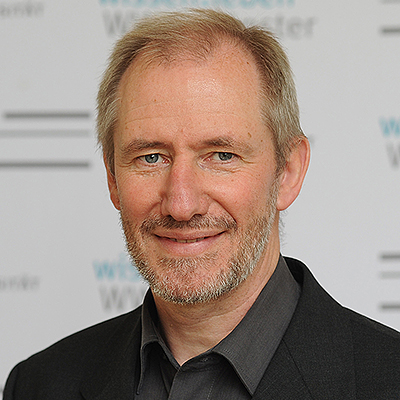“Science is good when it’s creative”

Prof. Gerke, what scientific topic are you working on right now?
The focus of my scientific interest is cellular membranes, and two questions related to them: How are they structured and how can they steer such diverse processes as the changing forms of cells, cell movement and, in particular, membrane transport in cells? The last of these we examine in so-called exocytosis, which is the merging of intracellular vesicles with the cell membrane that leads to the release of substances into extracellular space. This is of special relevance in endothelial cells, a cell layer which lines all blood vessels. Endothelial cells possess so-called Weibel-Palade bodies, or WPBs for short, which secrete their contents through the just mentioned exocytosis and regulate so many processes in the blood vessel. Without this WPB exocytosis wounds would never close and inflammation would never proceed in a regulated manner.
Normally, blood platelets and immune cells flow through the blood without sticking to the vascular wall, in other words to the endothelial cells. However, if the blood vessel is damaged – for example as the result of a cut – or if there is a local inflammation in the tissue, then endothelial cells change their surface through WPB exocytosis of the adhesion proteins stored in them. Only when there is interaction with these adhesion proteins do immune cells and blood platelets stick to the endothelium and are able to perform their local tasks and close a wound or initiate an inflammatory response. The questions my working group is asking are: How are WPBs structured? Where do they come from, and in particular, how do they function? When we understand that, then we will be able to stimulate or suppress wound closure and local inflammatory responses, and possibly also exploit them in the case of certain illnesses.
What characterizes you personally as a scientist?
Research and scientific questions are things I find exciting. It’s a real thrill to gain new insights and advance the field of research you’re working in. Science has always shaped my life and has often provided a change of scenery. I studied Biochemistry in Hanover and then did research in a fantastic group at the Max Planck Institute of Biophysical Chemistry. After that I went to Yale University in the USA. I had always had an urge to go abroad. As a scientist it broadens your horizons enormously. Then I came back to Göttingen, where I established my first junior research group, and in 1994 I moved to Münster, where I’ve been doing research ever since. Now and then, though, I’ve been able to fit in longer periods of research at other places, for example in Seattle and Portland, where I pursued new ideas and learnt new methods. Such research semesters, spent abroad, also bring me back to the roots of research. As a group leader I mainly analyse and interpret data from my co-workers. When I do research abroad, I return to doing experiments myself.
What’s your favourite toy for research – and what can it do?
Optical microscopy. It has such a wide range of uses, and as a result you’re not restricted either methodologically or technically.
Can you remember your happiest moment as a scientist?
Happy moments are most frequently when my co-workers show me exciting new data and we discuss results and models in the light of these data. There have been – and still are – such moments again and again. It would be difficult to pick out individual highlights.
And what was your biggest frustration?
Frustration is a part of everyday life in the scientific world; 60 to 70 percent of all experiments come to nothing. It’s something I tell my people again and again. Anyone who can’t cope with that shouldn’t aim to work in science. What’s particularly annoying is when you’ve invested a lot of time and effort in an idea and, shortly before the end of the project, someone else publishes results on the same topic. Then that thrill of discovering something new for the scientific community is lost, even though the results themselves are no less important or interesting.
What big scientific question would you like to have an answer to?
There are so many questions … Every single “big question” is much too complex to be answered simply. There isn’t a Theory of Everything.
How much artistry, creativity and craftsmanship is there in your scientific work?
I would very much hope that my scientific work is creative. Whether it actually is, is something other people will have to judge. Science is only good when it’s creative. That’s the only way to develop new approaches, to play with methods, link them up and find answers.

